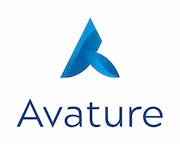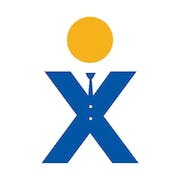Looking for the best employee engagement software? Our comprehensive buyers guide has got you covered Boost employee satisfaction, productivity, and retention with the right software. Check it out now!
Employee engagement is one of the most critical factors that determine the success of any organization. An engaged workforce is more productive, motivated, and satisfied in their jobs, leading to lower turnover rates, better customer experience, increased customer satisfaction and better business outcomes.
Gallup’s State of the Global Workplace discovered as many as 85% of employees are not engaged or are actively disengaged at work, which could be costing US businesses in the region of $450-550 billion per year. As a result, organizations worldwide are investing in employee engagement software to foster collaboration, recognition and communication in their workplaces.
In this buyer's guide, we'll delve into the key considerations to help you choose the best employee engagement platform for your unique business needs.
What is employee engagement software?
Employee engagement is the level of commitment and emotional investment that an employee has towards their job, colleagues and organization. When employees are highly engaged, they're more productive, more satisfied with their work, and more likely to remain with the company long-term. Employee engagement software is a tool that companies use to measure and improve employee engagement levels.
This software is designed to gather feedback from employees on a variety of topics related to their job satisfaction, work culture and overall wellbeing. The data collected is analyzed to identify areas that require improvement, to develop employee retention strategies and to boost employee morale.
There are numerous use cases for employee engagement software, including:
- Measuring employee engagement levels across the organization
- Identifying areas that require improvement in employee engagement
- Developing strategies for improving employee morale
- Supporting employee wellness initiatives
- Conducting regular pulse surveys to track employee sentiment
- Communicating organizational goals and values to employees
- Recognizing and rewarding high-performing employees
Many different types of companies use employee engagement tools, including:
- Large enterprises with a dispersed workforce
- Mid-sized companies that are experiencing growth
- Startups that want to build a positive company culture from the ground up
- Companies in industries where employee engagement is critical, such as healthcare and hospitality
By measuring engagement levels and identifying areas for improvement, organizations can build a positive company culture that supports employee well-being and drives business success.
Benefits of employee engagement software
Employee engagement software is an essential aspect of any modern business that wants to boost productivity, ensure optimal performance and retain top talents. This software is designed to help companies create an environment where employees are motivated, committed and satisfied with their jobs.
The following are the main benefits of employee engagement software:
- Improves employee productivity: Employee engagement software helps to keep employees engaged and motivated, resulting in increased productivity. Engaged employees tend to be more productive than those who are disengaged.
- Boosts employee morale: Engaged employees are happy employees. When employees feel a sense of involvement, they are more likely to be satisfied with their jobs and more committed to the organization.
- Better collaboration and teamwork: Employee engagement software helps to improve collaboration among employees and facilitates internal communication, making it easier for them to work as a team. This leads to higher productivity, as well as better outcomes for the organization.
- Increased employee retention: Engaged employees are less likely to leave the organization. Employee engagement software platforms help to keep employees satisfied and motivated, reducing employee turnover and saving the company the costs of hiring and training new staff.
- Real-time feedback and data: Employee engagement software provides real-time data and continuous feedback on employee performance, allowing organizations to monitor employee morale and address any issues through timely interventions.
- Improved customer satisfaction: Employees who are engaged and satisfied with their jobs are more likely to provide better customer experience and service. This leads to improved customer satisfaction and increased loyalty.
10 features of employee engagement software
Here are 10 common features of employee engagement software that businesses should look for:
-
Employee engagement surveys and feedback tools
Employee engagement software often comes equipped with survey and feedback tools that enable managers to get a better understanding of employee satisfaction levels, workplace issues, and areas for improvement.
-
Recognition and rewards programs
Recognition and rewards programs incentivize employees to work harder and achieve their goals. This feature also facilitates peer recognition.
-
Communication and collaboration tools
These features facilitate employee communication and teamwork as they include messaging, project management and file-sharing tools.
-
Performance tracking
This gives businesses the ability to track employee performance over time. Managers can set goals and track remote employees' progress, ensuring everyone is working towards the overarching business objectives.
-
Training and development tools
These tools enable employees to develop new skills and improve their performance over time. These tools can include e-learning modules, skills assessments, and performance reviews.
-
Onboarding and offboarding
An effective employee engagement software should have onboarding and offboarding tools that streamline the hiring and termination process. These can include digital onboarding forms, employee handbooks and exit survey tools.
-
Data analytics
Advanced employee engagement software can provide businesses with insights into employee trends, performance metrics and other important indicators of organizational health. Data analytics can help businesses make informed decisions on how to improve employee engagement over time.
-
Employee self-service
Some employee engagement software comes equipped with self-service tools that enable employees to manage their own HR tasks such as submitting time off requests, updating personal information and accessing employee benefits.
-
Customizable dashboards
A customizable dashboard enables businesses to set up a personalized view of employee data and engagement metrics. Managers can easily monitor metrics that matter the most to them and make informed decisions.
-
Mobile access
Many modern employee engagement software comes with a mobile app that enables managers and employees to access employee engagement features on-the-go. This feature is particularly useful for remote employees or managers who are frequently on the go.
Key considerations when purchasing employee engagement software
When it comes to selecting employee engagement software that suits your business needs, there are several factors that you should consider.
-
Ease of use and integration
It is crucial to choose an engagement software that is easy to use and integrate with the existing systems. Employees already have enough technology to deal with daily, so adding more systems will only lead to frustration. Therefore, select software that can quickly be integrated with other software to help employees access information easily.
-
The software's key features should align with your business needs
Consider selecting software that offers robust communication tools to keep employees informed on company goals and updates. Other features to consider include planning and project management tools and performance management tools. The more features the software offers, the more you can customize your approach and tailor the software to your business.
-
The importance of your employees' privacy
When choosing employee engagement software, consider the software's security and privacy standards. Ensure that it complies with global data protection regulations like GDPR and follows strict data protection policies.
-
Cost
Some software systems are expensive, while others are cost-effective. When considering the cost, think about the software's features and how well they align with your business needs. Evaluate the ROI of the software and how it will benefit your business in the long term. This way, you can invest in the right software that aligns with your budget and business goals.
-
Flexibility and scalability
As your business grows and evolves, your software needs may change. It should easily adapt to your evolving business needs and be flexible enough to accommodate changes as necessary. Furthermore, it needs to be scalable, meaning that it can grow with your business. Selecting software that can grow with your business can save you from having to replace it in the long run.
Future trends for employee engagement software
Employee retention has been one of the most significant challenges for organizations for a long time. However, the recent advancements in HR technology have opened new avenues for companies to keep their workforce engaged and motivated. As we look towards 2024 and beyond, employee engagement software solutions will continue to play a pivotal role in ensuring that both office and remote employees feel valued and connected to their workplace.
- One of the biggest trends in employee engagement software is the use of advanced artificial intelligence (AI) models and analytics. This technology allows organizations to identify and address areas of friction in the employee experience, ultimately improving their overall engagement levels.
- Another notable trend is the use of gamification and behavioral science practices. By incorporating game-like features into work experiences, organizations can increase motivation, boost collaboration, and enhance productivity.
- Mobile-first techniques are also becoming increasingly important, with the rise of deskless workers who need to feel at home in their work environment. Modernizing engagement strategies to cater to their needs can significantly contribute to their overall job satisfaction and retention.
- Finally, video content, including video SEO, is likely to be a crucial component of engagement strategies moving forward. With the boom in remote work, virtual collaborations, and the need for personalization, video can help organizations connect with their employees and build stronger relationships.






